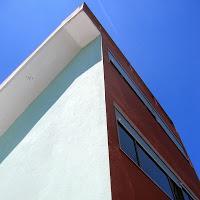 Cité Frugès, also known as Les Quartiers Modernes Frugès, is a 1920s housing estate of particular architectural and historical significance, and its 50 properties have slowly become a source of pride for the surrounding town of Pessac.
Cité Frugès, also known as Les Quartiers Modernes Frugès, is a 1920s housing estate of particular architectural and historical significance, and its 50 properties have slowly become a source of pride for the surrounding town of Pessac. This unique venture was initially commissioned in 1924 by the local industrialist Henry Frugès (1879-1974), whose wealth had been built on the success of his sugar refinery business (later taken over by Béghin-Say, which ceased operations in Bordeaux in 1984). Frugès, who had already nurtured a reputation as a rich eccentric, as showcased by his spectacular residence on Place des Martyrs de la Résistance in central Bordeaux (still known as Hôtel Frugès), developed an ambitious plan to house his factory workers.
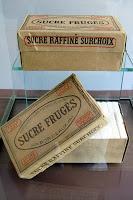
Packs of Frugès sugar.
Frugès acquired a large plot of land in the Le Monteil district of Pessac and called on the help of the rising avant-garde urban architect Charles-Edouard Jeanneret-Gris (1887-1975), now famously known as Le Corbusier, to make the dream reality. The pair had already attempted something similar in Lège on the Bassin d’Arcachon (where ten homes had been built for employees of Frugès's packaging branch).Frugès’s brief for the Pessac estate, Le Corbusier's first large-scale urban project, was simple: “I authorise you to put your theories into practice, however extreme the consequences might be. I would like to achieve conclusive results in a new form of inexpensive living quarters. Pessac must be a laboratory.” In other words, Le Corbusier, working in partnership with his cousin Pierre Janneret, was being given a life-size sandbox to roll out his vision of economic, standardised mass-produced properties which were geometrically sparse, minimalist and functional.
It resulted in what was one of France’s first attempts at social housing, although the initial plan for 135 houses was downsized to the 50 which were delivered in 1926. Six different types of flat-roofed houses were available and all were made up of identically-sized angular modules. Each variant - Arcade, Gratte-ciel (skyscraper), Isolée, Jumelle (twin), Quinconce, Zig-zag - is described in detail here. The surface area of the reinforced concrete houses (the walls of which were just 4 centimetres thick in places) ranged from 75 to 90m² and each comprised an entrance hall, a kitchen, a living room, a bathroom with shower and toilet, and two or three rooms on the upper floors. Innovations included isothermic walls, suspended gardens and sometimes integrated garages. Outside, Le Corbusier decided to add dashes of color to brighten up the neighbourhood.
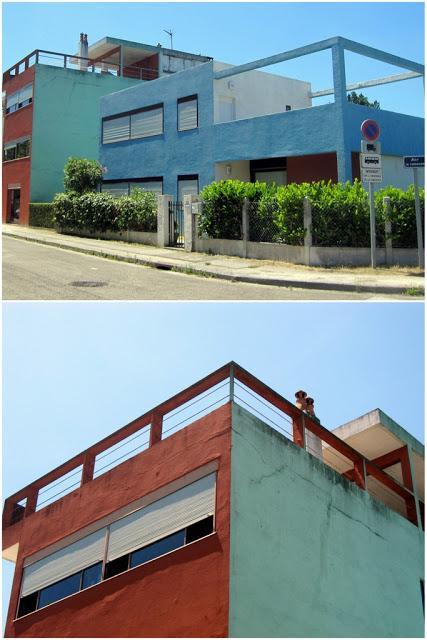
The houses arguably still look modern today so we can only imagine how revolutionary they must have seemed at the time. But they struggled to gain acceptance, including from Frugès’s factory workers themselves, who did not take up residence in the houses; they were deemed too far away from their workplace and difficult to get to. The properties were sold on to private owners at a loss, resulting in a massive financial shortfall for Frugès himself.
Le Corbusier also acknowledged the failure of the venture, underlining nevertheless how versatile the properties were proving to be as they underwent transformations led by their new owners. According to a colleague who once lived in a Cité Frugès property, the outside walls alone were supporting walls, making it possible to infinitely reconfigure the inner layout of the houses.
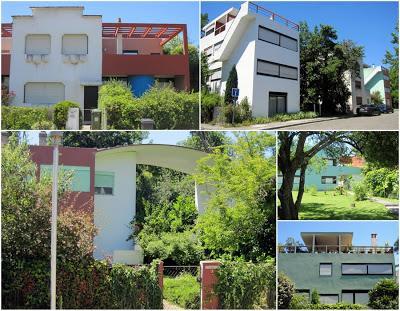
Different designs, clockwise from top left: Quinconces, Gratte-ciel, Zig-zag, Isolée and, bottom left, the listed Arcade house (see below).
The estate continued to fall out of favour and the properties began falling into disrepair, until 1973 when a landlord worked hard on restoring his property (an “Arcade” model), which became such a personal source of pride that he applied to have his house listed as an historic monument. This status was granted in 1980 and marked a turn in fortunes for Cité Frugès, which stepped up another gear when the town of Pessac purchased one of the houses (a Gratte-ciel model), turning it into a permanent exhibit which is open to the general public. The museum provides a means of getting a fascinating inside view of Le Corbusier’s 1920s vision.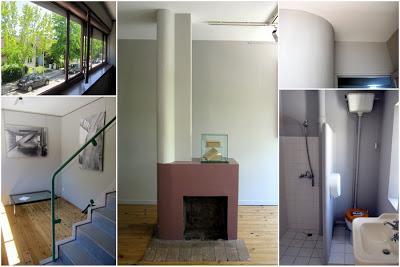
Inside la Maison Frugès-Le Corbusier, complete with fireplace and bathroom.
The turnaround was complete: the estate was finally being celebrated by Pessac itself as an innovative attempt at housing for the masses, and the individual homes became well looked-after and highly desirable commodities on the property market. In this internet age, Cité Frugès has also been given a new lease of life and the estate is set to feature in a crowd-funded documentary led by a collective known as La Machine à Habiter, the name a reference to Le Corbusier's vision of what a house should represent: a machine to be lived in.Today the estate is regarded as one of the more unusual sights to take in for locals and tourists alike, and it is said that people who live there have, over the years, got used to seeing architecture students and enthusiasts (and British bloggers) touring the streets, notebooks and cameras in hand. And, while most of the properties are visibly lovingly cared-for by their owners, there are still one or two examples of homes which are remain a little short of tender loving care...
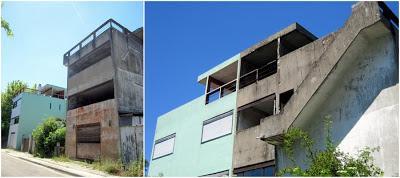
- Find them: Maison Frugès-Le Corbusier, listed Arcade property, Cité Frugès, Pessac
- There is plenty more to read on the internet about Cité Frugès including:
- Detailed blog and video documentary project - lamachineahabiter.com
- Dedicated website - fruges.lecorbusier.free.fr
- Pauline Marchandou website - lecorbusier.cv-aurelien.com
- Introduction and museum information on Pessac municipal website - www.pessac.fr/cite-fruges-le-corbusier.html
- And let's sign off with a handful of video clips, the first being a 1967 interview with Henri Frugès himself:
Click here if video doesn't display properly on your device.
Click here if video doesn't display properly on your device.
Click here if video doesn't display properly on your device.
